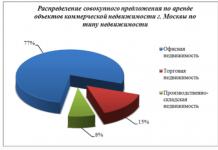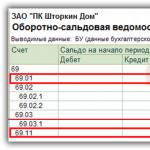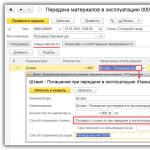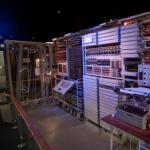Analysis of the commercial real estate market in Moscow at the end of the first half of 2017
This market analysis was prepared based on information published in the public domain on the websites: https://www.cian.ru/, http://realty.dmir.ru/, https://rosreestr.ru/, etc.
According to Rosreestr (https://rosreestr.ru/), in the first half of 2017, about 600 purchase and sale agreements for commercial real estate were registered in Moscow. The most expensive transaction was registered in March 2017: non-residential premises with a total area of 13,404.6 m² were sold in the Danilovsky district of the Southern Administrative District of Moscow, the transaction amount was 1,700,000,000 rubles / 126,822.14 rubles per square meter. The minimum amount of the registered transaction was recorded in February 2017 and amounted to 275,000 rubles / 8,487.65 rubles per square meter: a non-residential building with a total area of 32.4 m² was sold in the Veshnyaki district of the Eastern Administrative District of Moscow.
An analysis of the commercial real estate market in Moscow shows that there is no shortage of supply of commercial properties in the capital: the entire range of commercial real estate of various classes and purposes is presented on the market. At the end of the first half of 2017, more than 50,000 office, retail, industrial and warehouse real estate properties were offered for sale in the city.
Most of all office properties are offered for sale - 72%, in second place is retail real estate - 21%, followed by industrial and warehouse real estate - 7%.
In terms of the number of proposals, the Central Administrative District (CAO) is in the lead, followed by the Southern and Northern Administrative Districts (Southern Administrative District and Northern Administrative District), in third place are the Western, Southwestern and Northeastern Administrative Districts (ZADO, SWAD and NEAD), followed by the Eastern Administrative Okrug and the South-Eastern Administrative District (VAO and SEAD), the North-Western Administrative District (SZAO), the Novomoskovsk Administrative District (NAO), the last place was shared by the Zelenograd and Troitsky Administrative Districts (ZelAO and TAO).
The distribution of the total supply for the sale of commercial real estate in the city of Moscow by type of real estate, at the end of the first half of 2017, is as follows:
Figure 1. Distribution of the total supply for the sale of commercial real estate in Moscow by type of real estate
Most of all office properties are offered for sale - 49%, in second place is retail real estate - 48%, followed by industrial and warehouse real estate - 3%.
The distribution of the total supply for rental of commercial real estate in the city of Moscow by type of real estate, at the end of the first half of 2017, is as follows:
.png)
Figure 2. Distribution of the total supply for rental of commercial real estate in Moscow by type of real estate
The vast majority of commercial properties offered for rent are office real estate - 77%, followed by retail real estate - 15%, followed by industrial and warehouse real estate - 8%.
In terms of the number of proposals, the Central Administrative District (CAO) is in the lead, the Southern Administrative District (SAD) is in second place, the Northern and North-Eastern Administrative Districts (NAD and NEAD) are in third place, followed by the South-Eastern, Western, Eastern and South-Eastern Administrative Districts. Western Administrative Okrug (YuVAO, ZAO, VAO and SWAO), North-Western Administrative Okrug (NWAO), Novomoskovsk Administrative Okrug (NAO), the last place was shared by Zelenograd and Troitsky Administrative Okrug (ZelAO and TAO).
To improve the quality of the analytical base and the quality of the analysis of the commercial real estate market, the city of Moscow was divided into 24 zones. The division was based on large transport arteries of the city, such as: the Garden Ring, the Third Transport Ring, Mira Avenue, Kutuzovsky Prospekt, Pavlovskaya Street, Nikoloyamskaya Street, the Moscow Ring Road and the Moscow Small Ring (Route A107, “first concrete road”).
The highest average cost of 1 m² of office real estate within the boundaries of “old Moscow” was recorded in the Central Administrative District (within the UK) - 394,784 rubles, the lowest in the ZelAdministrative District - 91,326 rubles. The highest average rate for 1 m² of office real estate offered for rent was recorded in the area from Mira Avenue to Kutuzovsky Avenue (from SK to TTK) and amounted to 24,191 rubles per year, the lowest in the North-Eastern Administrative District (beyond the Moscow Ring Road) - 10,460 rubles per year .
The highest average cost of 1 m² of retail real estate within the boundaries of “old Moscow” was recorded in the Central Administrative District (within the UK) - 655,000 rubles, the lowest in the Northern Administrative District (outside the Moscow Ring Road) - 91,095 rubles. The highest average rate for 1 m² of retail real estate offered for rent was recorded in the area from Nikoloyamskaya Street to Mira Avenue (from SK to TTK) and amounted to 57,239 rubles per year, the lowest in the North-Eastern Administrative District (beyond the Moscow Ring Road) - 15,600 rubles per year .
The highest average cost of 1 m² of industrial and warehouse real estate within the boundaries of “old Moscow” was recorded in the South-Western Administrative District (from the Third Transport Ring Road to the Moscow Ring Road) - 145,051 rubles, the lowest in the Eastern Administrative District (beyond the Moscow Ring Road) - 28,036 rubles. The highest average rate for 1 m² of industrial and warehouse real estate offered for rent was recorded in the Central Administrative District (within the UK) and amounted to 14,223 rubles per year, the lowest in the Northern Administrative District (outside the Moscow Ring Road) - 4,140 rubles per year.
The average cost of 1 m² of commercial real estate in Moscow for all zones, at the end of the first half of 2017, is presented in the table below:
.png)
Table 1. Average cost of 1 m² of commercial real estate in Moscow at the end of the first half of 2017
The minimum (min) and maximum (max) costs of 1 m² of commercial real estate in the city of Moscow in all zones, at the end of the first half of 2017, are presented in the table below:
.png)
Table 2. Minimum (min) and maximum (max) cost of 1 m² of commercial real estate in Moscow at the end of the first half of 2017
* SK - Garden Ring; TTK - Third Transport Ring; MKAD - Moscow Ring Road; MMK (A107) - Moscow Small Ring (road A107).
The average cost of 1 m² of commercial real estate in Moscow by property class (classes A and B), at the end of the first half of 2017, is presented in the table below:

Table 3. Average cost of 1 m² of commercial real estate in Moscow by property class at the end of the first half of 2017
* SK - Garden Ring; TTK - Third Transport Ring; MKAD - Moscow Ring Road; MMK (A107) - Moscow Small Ring (road A107).
The minimum cost of 1 m² within the boundaries of “old Moscow” in the office real estate segment was recorded in the South-East Administrative District (from the Third Transport Ring to the Moscow Ring Road) and amounted to 36,344 rubles, the maximum cost was recorded in the Central Administrative District (within the UK) and amounted to 2,105,263 rubles. The minimum rate for 1 m² of office real estate offered for rent was fixed in two zones at once: in the area from Pavlovskaya Street to Nikoloyamskaya Street (from SK to TTK) and in the South-Eastern Administrative District (from TTK to MKAD), and amounted to 1,000 rubles per year . The maximum rental rate for 1 m² was recorded in the area from Nikoloyamskaya Street to Mira Avenue (from SK to TTK) and amounted to 144,000 rubles per year.
The minimum cost of 1 m² within the boundaries of “old Moscow” in the retail real estate segment was recorded in the Eastern Administrative District (beyond the Moscow Ring Road) and amounted to 33,058 rubles, the maximum cost was recorded on the section from Nikoloyamskaya Street to Mira Avenue (from SK to the Third Transport Ring) and amounted to 3,206 349 rubles. The minimum rate for 1 m² of retail real estate offered for rent was fixed in the South-Eastern Administrative District (outside the Moscow Ring Road) and amounted to 1,164 rubles per year. The maximum rental rate for 1 m² was recorded in the area from Pavlovskaya Street to Nikoloyamskaya Street (from SK to TTK) and amounted to 405,000 rubles per year.
The minimum cost of 1 m² within the boundaries of “old Moscow” in the industrial and warehouse real estate segment was recorded in the South-Eastern Administrative District (from the Third Transport Ring Road to the Moscow Ring Road) and amounted to 8,165 rubles, the maximum cost was recorded in the Closed Joint-Stock Company (from the Third Transport Ring Road to the Moscow Ring Road) and amounted to 145,985 rubles. The minimum and maximum rates for 1 m² of industrial and warehouse real estate offered for rent were fixed in the South-Eastern Administrative District (beyond the Moscow Ring Road) and amounted to 970 and 42,840 rubles per year, respectively.
Moscow is a major cultural center of Europe and the world; more than a third of the country's historical sites are concentrated in the city, many of which are included in the UNESCO World Heritage List. The thousand-year history of Moscow is also preserved in its architecture - the city is home to cultural heritage sites with federal, regional and designated protected status, many of which are offered for sale as commercial real estate.
The distribution of the total supply for the sale/rent of cultural heritage objects for commercial purposes in the city of Moscow by protection status, at the end of the first half of 2017, is as follows:

Figure 3. Distribution of the total supply for the sale/rent of cultural heritage objects for commercial purposes in Moscow by protection status
Most of all, identified objects of cultural heritage are offered for sale - 45%, in second place are regional objects of cultural heritage - 38%, followed by federal objects of cultural heritage - 17%.
The majority of commercial properties offered for rent are regional cultural heritage sites - 45%, identified cultural heritage sites are in second place - 40%, followed by federal cultural heritage sites - 15%.
Most of the cultural heritage objects proposed for sale are located within the Third Transport Ring, therefore, in order to improve the quality of the analytical base and the quality of the analysis of the market for cultural heritage objects for commercial purposes, the city of Moscow was divided into 2 zones: the Central Administrative District (within the SK) and the area between the SK and the Third Transport Ring . Outside the Third Transport Ring, no proposals for the sale of cultural heritage objects for commercial purposes have been found.
The average, minimum (min) and maximum (max) costs of 1 m² of cultural heritage objects for commercial purposes in the city of Moscow, at the end of the first half of 2017, are presented in the table below:
Table 4. Average, minimum (min) and maximum (max) costs of 1 m² of cultural heritage objects for commercial purposes in Moscow at the end of the first half of 2017
The average cost of 1 m² of cultural heritage objects for commercial purposes in the city of Moscow by protection status, at the end of the first half of 2017, is presented in the table below:
Table 5. Average cost of 1 m² of cultural heritage objects for commercial purposes in the city of Moscow by protection status at the end of the first half of 2017
* SK - Garden Ring; TTK - Third Transport Ring.
The highest average cost of 1 m² of cultural heritage objects for commercial purposes was recorded in the Central Administrative District (within the UK) - 458,060 rubles for a federal cultural heritage object, the lowest in the area between the UK and the Third Transport Ring - 248,472 rubles for a regional cultural heritage object. The highest average rate for 1 m² of cultural heritage objects for commercial purposes offered for rent was recorded in the Central Administrative District (within the UK) and amounted to 30,927 rubles per year for a federal cultural heritage object, the lowest in the area between the UK and the Third Transport Ring - 16,200 rubles per year for a federal cultural heritage site.
According to a marketing study of the residential real estate market in Russia conducted in August 2017 by BelBusinessConsulting, in 2016 the volume of housing commissioning in Russia amounted to 80.2 million square meters. m, which is 6.0% less than in 2015. The greatest decrease in commissioning is observed in the segments of individual residential buildings, dormitories and multi-apartment low-rise blocked buildings. At the same time, there is an increase in the construction of economy-class residential buildings.
The largest volumes of housing commissioning in 2016 in absolute terms were recorded in the Moscow region, Krasnodar Territory, St. Petersburg and the Republic of Bashkortostan. The least amount of housing in Russia was commissioned in 2016 in the Murmansk region, Magadan region and Chukotka Autonomous Okrug - in these regions, housing commissioning did not exceed 100 thousand sq.m.
The total area of residential premises per person in Russia on average in 2016 was 24.5 square meters. meters, which is 2-3 times less than in developed countries (in Europe, on average, about 60 sq.m. per person, in the USA, on average, about 70 sq.m. per person).
The regions with the best housing provision are the Moscow, Tver and Novgorod regions. The regions least provided with housing are the Republic of Tyva, the Republic of Ingushetia and the Chechen Republic.
The leader of the Russian construction market in 2016 was the Setl Group company from St. Petersburg, which commissioned 1.046 million sq.m. housing, which is 49.4% more than in 2016. Also in the top three leaders of the Russian market in 2016 were LSR Group (789 thousand sq.m.) and Absolut Group of Companies (562 thousand sq.m.). The most important events that will have a strong impact on the alignment of players in the first echelon of the Russian construction market were the acquisition of Morton Group of Companies PIK and the reorganization of Group of Companies SU-155.
From 2013 to 2015, the housing market in Russia experienced an increase in prices, but in 2016 the situation changed - average prices for residential premises decreased by 1.4% to 54.04 thousand rubles per 1 sq.m. At the same time, the main factor in the decline in average prices for residential real estate in Russia in 2016 was the decline in prices on the secondary market.
The maximum housing prices at the beginning of 2017 were recorded in Moscow, St. Petersburg and the Kamchatka Territory. The cheapest housing in Russia at the beginning of 2017 could be bought in the Bryansk region, Stavropol Territory and the Republic of Kalmykia.
The consequences of the negative geopolitical background greatly influenced the development of the Russian economy, in particular the construction industry. First of all, this is due to a fall in household incomes, a reduction in the volume of construction financing, an increase in the cost of borrowed funds, and more difficult access to credit resources. Based on the results of 2017, a decrease in housing commissioning is predicted to 75 million square meters. m. and a further decrease in housing commissioning is expected over the next 2-3 years.
You can learn more about the state and prospects of the residential real estate market in Russia from the study “Residential Real Estate Market in Russia” conducted by BelBusinessConsulting specialists by following the link http://belconsult.ru/index.php?option=com_remository&Itemid=36&func=fileinfo&id= 249
Commercial real estate, market analysis of the commercial real estate rental market, retail real estate, office real estate.
Main conclusions
The volume of supply on the Moscow commercial real estate sales market has decreased significantly over the year, with a simultaneous significant decline in prices. On the contrary, in the commercial real estate rental market, rates remained at the level of December 2016, with a less significant decrease in supply volume.
The volume of supply in both the rental and sales markets increased over the year only for retail premises. In the rental market, a decrease in rates was observed only for retail properties, and in the sales market, the decrease in prices for them was maximum in comparison with other types of real estate.
For individual segments in the rental and sales markets, the situation is as follows:
- The reduction in rates for retail properties was less significant compared to the reduction in prices and differed little between properties both within and outside the Garden Ring. For street retail properties, rates and prices outside the center decreased insignificantly, while in the center the rates and, especially, prices decreased much more significantly.
- With the exception of offices rented outside the center, the volume of supply of office properties has seriously decreased, however, while rates have increased moderately (more significantly in the center), prices have decreased (more significantly within the Garden Ring).
- The total area of industrial and warehouse premises on the rental market has decreased significantly, and rates have increased slightly. In the sales market, both supply volume and prices decreased at an average rate.
Main conclusion:
The lack of growth in the commercial real estate market, as before, is associated with an insufficient level of business activity in the construction of new facilities and extremely modest macroeconomic indicators. Despite the increase in investment in commercial real estate in Russia in 2017 by 27% compared to 2016, the lag in investment volume from the pre-crisis level of 2013 is more than twofold. In such conditions, the rental market feels more confident than the sales market.
The implementation of pent-up demand in the low office market due to low business activity is not yet capable of leading to an increase in prices even in the face of a reduction in supply. The situation on the rental market is somewhat better, but the increase in rates is insignificant. Consumer demand remains low both due to low incomes of the population and the predominance of the saving behavior model. These factors have a negative impact on the retail space market in general, and on the overstocking of the sales market in particular.
In 2018, the year of the presidential elections, investment activity is likely to be traditionally low. Given the lack of growth in investment and business activity, it can be assumed that there will be no noticeable improvement in the commercial real estate market during the year.
Research methodology
As objects for research of the market for the sale of commercial real estate, commercial real estate objects put up for sale in open sources were selected - office, industrial and warehouse premises (PSP) and free commercial premises (PSN), as well as retail premises with a total area of more than 100 sq.m. In this case, for the purpose of analyzing price dynamics, the weighted average sales price is used, which is calculated as the ratio of the total cost of objects to the total area of these objects.
As objects for research of the commercial real estate rental market, commercial real estate objects offered in open sources were selected - retail, office, industrial and warehouse premises (PSP) with a total area of more than 50 sq.m. For the purpose of analyzing price dynamics, the average rental rate is used, which is calculated as the arithmetic average of the prices of all objects, as well as the total annual rent (GAP), which is calculated as the sum of the rent for the year.
Rent
Market as a whole
Supply volume
The volume of supply throughout 2017 fluctuated noticeably from month to month, but in general we can say that it grew until the summer, after which it decreased.
The overall decrease in supply by area over 12 months was 7%.
In December 2017, 2,992 objects with a total area of 1,467 thousand square meters were exhibited on the market.
Price indicators
Rental rates throughout 2017, as well as the volume of supply, fluctuated, but not significantly.
The average rental market rate from December 2016 to December 2017 increased by 1% in ruble terms and decreased by 9% in dollar terms. In December, the average rental rate was 18,236 rubles/sq.m./year, or $313/sq.m./year.
Against the backdrop of low inflation (2.5% for 2017 according to Rosstat) and extremely modest other macroeconomic indicators, a 1% rate increase can be assessed as a very good indicator, characteristic of our “new economic reality.” Compared to the sales market, the rental market for all types of real estate in these conditions is doing significantly better.

Comparative analysis by segments
Supply volume
The growth rate of supply volume by total area in 2017 in the rental market was +4% for retail real estate, -5% for office real estate and -13% for industrial and warehouse real estate.
The total area of exhibited objects in December 2017 was: 221 thousand sq.m. for retail facilities, 750 thousand sq.m. – for office and 496 thousand sq.m. – according to production and warehouse.

Throughout 2017, the average area of exhibited retail premises decreased by 8%, industrial and warehouse premises - by 15%, office premises - by 13%.


Price indicators
The average rate for retail premises from December 2016 to December 2017 decreased by 5% to 30,627 rubles/sq.m/year, for office premises - increased by 3% to 17,129 rubles/sq.m/year, for industrial warehouse premises increased by 2% and amounted to 6,526 rubles/sq.m/year. Judging by the decrease in rental rates, retail premises were in the least demand.
The change in the annual total rent from December 2016 to December 2017 was +23% for retail premises, -3% for office premises and -13% for industrial and warehouse premises.
After a slight increase in rates for retail premises in 2016, when rates for office real estate and industrial and warehouse premises decreased, the situation changed to the exact opposite. Low demand for retail space, as well as in the sales market, may be caused by low incomes of the population and the predominance of a savings model of behavior.


Retail real estate
Supply volume
The volume of supply of retail space by area in December 2017 in the center decreased by 31%, while outside the Garden Ring it increased by 7%. The change in the number of exhibited objects was -31% and +18%, respectively.
In total, in December 2017, 43 objects with a total area of 10 thousand square meters were put on the market within the Garden Ring and 625 objects with an area of 211 thousand square meters outside it. The total supply of retail premises amounted to 668 objects with a total area of 221 thousand. sq.m. with an average area of one object of 331 sq.m.


Price indicators
The average rate for properties in the center from December 2016 to December 2017 decreased by 2% to 62,471 rubles/sq.m/year, and for properties outside the Garden Ring did not change and amounted to 28,438 rubles/sq.m/year . Judging by the significant reduction in rates for objects in the center for the second year already, the demand for them is declining.
Annual rent for properties within the Garden Ring decreased by 31%, and outside the Garden Ring increased by 34%.


Street-retail
The volume of supply of street-retail format objects over 12 months in terms of total area increased by 12%, incl. in the center - decreased by 6%, and outside it increased by 14% and amounted to 17 objects with a total area of 3 thousand sq.m. in the center and 224 objects with an area of 61 thousand sq.m. beyond.
The average rental rate for 12 months decreased by 9% to 33,948 rub./sq.m./year, while in the center it decreased by 16% to 70,361 rub./sq.m./year, and outside it - by 4% up to RUB 31,184/sq.m./year.
The situation with demand for street-retail in the center is somewhat different from the situation for retail premises in general - in that in 2016 prices for street-retail in the center were growing. However, in 2017, the decrease in prices for such objects clearly exceeds the decrease in prices for street-retail in the periphery.

Office real estate
Supply volume
The volume of office supply by total area from December 2016 to December 2017 decreased by 45% in the center and increased by 1% outside it. The change in the number of exhibited premises was -28% and +16%, respectively.
In total, in December 2017, 174 objects were exhibited within the Garden Ring and 1,612 objects outside it with a total area of 57 and 693 thousand square meters. m respectively. The total supply of office space in December amounted to 1,786 objects with a total area of 750 thousand sq. m. with an average area of 420 sq. m per object. m.


Price indicators
The average rate for office properties in 2017 generally increased by 3% to RUB 17,129/sq.m./year. Within the Garden Ring, the average rate increased by 10% and amounted to 28,049 rubles/sq.m./year, and on the periphery by 5% to 15,950 rubles/sq.m./year.
The total annual rent for office offers in the center decreased by 38%, and outside the Garden Ring - increased by 5%.
Judging by the changes in rates over the past 2 years, the demand for office properties in the center is higher than outside it.


In 2017, prices for secondary apartments in Moscow continued to creep down amid a reduction in effective demand and under pressure from the huge supply of new buildings. But, most likely, the square meter would have lost much more if it were not for mortgages, the rates for which dropped to a record low.
According to the analytical center www.irn.ru, in 2017, the ruble index of housing costs in the capital decreased by 1.7% and at the end of the year averaged about 167,000 rubles. per square meter. However, in addition to the obvious decrease in the cost of a meter, which is reflected by the dynamics of stated prices, there is also an implicit one - due to discounts and bargaining. Sales prices (based on real transactions) fell by about 7-8% over the year - see “Apartments in Moscow and the Moscow region in November-December 2017.”
It should be noted that the real estate market was greatly helped by the record reduction in mortgage rates. Let us remind you that, thanks to a decrease in inflation and the Central Bank’s key rate, mortgages for the purchase of finished housing fell in price to approximately 10% per annum by the end of the year. For comparison: a year ago, the average rate for issuing mortgage loans on the secondary market was almost 13%.
Most likely, if it weren’t for mortgages, the price drop would have been more significant, closer to 10%, because a decrease in loan rates increases the solvency of potential buyers and makes housing more affordable.
Exactly how much can be calculated using the mortgage calculator on www.irn.ru. With a rate of 13%, a down payment of 20% and a 15-year loan term, the monthly payment for an apartment worth 8 million rubles. will be almost 81,000 rubles. Since monthly loan payments should not exceed 50% (or preferably 30%) of the borrower’s income - these are the requirements of banks, at this rate the mortgagee should receive more than 160,000 rubles. per month. And at a rate of 10%, the bank will have to give about 69,000 rubles. per month, and the required level of income is reduced to 138,000 rubles.
In the context of housing types, the most expensive segment, monolithic brick houses, where the majority of business class offers are concentrated, fell in price the most, by 6.5%. The markdown of high-budget real estate is of a “catch-up” nature. The fact is that, unlike economy class, which has been falling in price since 2015, prices for expensive housing have demonstrated phenomenal stability for a very long time. For example, at the end of 2016, monolithic brick lost less than 1%, and the old panel lost almost 7% (see “Review of the real estate market based on the results of 2016”).
However, as IRN.RU has repeatedly warned, the stability of prices for expensive real estate is apparent: the high-budget segment always resists changes in economic realities longer, but in the end it becomes cheaper no less than mass housing.
That's what happened this time too. By mid-2017, owners of overvalued apartments, who had not received buyers with pre-crisis budgets for two years, began to remove real estate from sale en masse. And, as a result, by the fall, prices in the expensive segment went down at an accelerated pace (see “Review of the real estate market based on the results of August 2017”).
Five-story brick buildings performed best at the end of 2017 – they were the only ones in the black, albeit small (1.2%). Apparently, this segment has become the main beneficiary of the program launched by the Moscow authorities for the renovation of dilapidated housing. At the same time, the renovation was unable to pull the Khrushchev panel buildings into the positive zone - they lost 2%. The multidirectional price dynamics of two segments that are similar, at first glance, is explained by a noticeable difference in the quality of housing - after all, even if a new apartment is given, it will not be soon, and waiting to move into a five-story brick building is much more pleasant than in a panel building.
However, the fall in declared prices for “Khrushchev houses” was partially slowed down by the hype around the renovation - other types of panel houses fell in price more.
Along with brick five-story buildings, Stalin buildings and standard brick houses looked a little better than the market in 2017. The main advantage of the segment is its good location: such houses are usually located relatively close to the center, near metro stations.
All of the trends described above are reflected by price dynamics by geography. The market outsiders at the end of 2017 included the most expensive districts: Central, Western, Southwestern. Better than them, but worse than the market on average are the environmentally unfavorable and remote from the center Southern and South-Eastern districts, mainly built up with panel housing. And the democratic districts with a large number of brick five-story buildings and/or Stalin buildings - Northern, Eastern, Northwestern - took the lead.
A similar picture emerges when considering the dynamics of prices by room. Large and therefore expensive apartments – multi-room and three-room apartments – have fallen the most. Prices for “one-room apartments” (there are many of them in five-story buildings) decreased by only 1%, and “two-room apartments” went to zero - this is the most popular option among family buyers.
Serious crisis phenomena in the Russian and global economies contribute to stagnation in the housing market, lower prices and, accordingly, a fall in the real demand of the population.
The situation in the real estate market today is characterized by a decrease in sales volumes, a fall in prices for residential properties of the old stock, a decrease in the total number of transactions and mortgage loans issued by banks.
Such trends have been formed gradually, over the past 2-3 years, due to the following reasons:
- the introduction of political and economic sanctions against Russia, a ban on the acquisition of securities by large Russian investment companies and private businessmen abroad;
- increasing the cost of new buildings being built;
- reduction in volumes and, as a consequence, bankruptcy of construction companies;
- a decrease in the solvency of potential buyers and the lack of stable growth in their income, difficulties in paying off debt;
- instability of exchange rates, which creates a problem with mortgages in foreign currency when converted into Russian rubles;
- increasing interest rates on newly issued mortgage loans and tightening bank requirements for potential borrowers and collateral;
- term limits and subsidies.
 All this had a negative impact on pricing processes in the housing market, sales and rental volumes of residential properties.
All this had a negative impact on pricing processes in the housing market, sales and rental volumes of residential properties.
Supply and Demand Relationship
Most of the forecasts of Russian economists boil down to the general opinion that in 2017 we should expect a continuation of the general trend of recession and falling real estate prices. If in 2015-2016 there was a gradual decline in the income of citizens and the demand for housing and commercial real estate, then in the next year it is possible to reach the “bottom” or collapse of the market.
Moreover, this process will be protracted, lasting from 2 to 4 years.
The phase of rapid decline will be characterized by the following phenomena: 
- of new housing will most likely strive to minimize risks by reducing the volume of commissioned space, and will choose the construction of only financially profitable objects as the main direction of their activity. This policy will lead to a permanent reduction in the scale of real estate commissioning.
- The level of solvency of the Russian population will continue to fall rapidly and the purchase of real estate or improvement of living conditions will become secondary. The level of demand decline in this situation is projected to be 30% compared to the current year. This will lead to a freeze in the construction of new buildings, an increase in the share of unsold space within a new home to 50% and a shift in emphasis to the secondary real estate market.
- The situation on the secondary market will be ambiguous. From the beginning of 2017, the state subsidy program with preferential interest rates for the purchase of new housing will be abolished. This will lead to attracting a share of buyers from the primary market. Considering the categories of real estate on the secondary market, it is expected that the cost per square meter in the old stock will become cheaper with a similarly declining demand, and prices for luxury apartments and commercial space will remain at the current level or decrease slightly. This is usually due to the lack of flexibility of sellers and their reluctance to reduce the price under any circumstances (even if the sales process is delayed for a long time).
- The reluctance of banks to reduce annual rates on mortgage loans, stringent requirements for real estate and potential borrowers will also contribute to a fall in the volume of their mortgage portfolios, which will negatively affect the level of demand.
- The commercial and residential rental market will be similarly affected by crisis phenomena in the form of a strong collapse in the volume of rented premises. In the residential real estate segment, tenants will focus on apartments and rooms with smaller areas and low monthly rents. In the category of commercial properties, the trend of a significant reduction in the cost of 1 square meter will continue in order to be sold by any means. In 2017, this market will be more affected by the issue of imbalance between supply and demand towards a strong imbalance of the latter.
 Stabilization of the current situation is expected by 2019-2020.
Stabilization of the current situation is expected by 2019-2020.
It is by this period that the start of recovery and a gradual return to pre-crisis levels is predicted.
Housing price level in 2017
Most experts who predict the development of the real estate market in the near future do not dare to voice specific figures and housing prices.
The situation will have an individual scenario in each specific region. Moscow, St. Petersburg and some other largest cities of the Russian Federation will most likely experience a period of sharp price decline.
 In the context of new economic realities, the cost will approach its real value, which will only have a positive impact on the further development of the housing and commercial real estate market.
In the context of new economic realities, the cost will approach its real value, which will only have a positive impact on the further development of the housing and commercial real estate market.
Some experts voice the opinion that prices will fall next year by 5-7%, others expect a decline of more than 10-15%. Let's analyze the forecasts and conclusions of leading Russian real estate experts.
Real estate experts' opinion
 The head of Sberbank of Russia G. Gref gives a forecast for the development of the Russian real estate market, based on the fact that positive dynamics will be observed only in relation to demand. According to him, most investors expect an even greater rate of decline in prices on the secondary market. And despite the relatively favorable prices of residential real estate, growth is not expected in the next few years.
The head of Sberbank of Russia G. Gref gives a forecast for the development of the Russian real estate market, based on the fact that positive dynamics will be observed only in relation to demand. According to him, most investors expect an even greater rate of decline in prices on the secondary market. And despite the relatively favorable prices of residential real estate, growth is not expected in the next few years.
 2016-2017 is a favorable period for investing without the possibility of obtaining a quick margin. To do this you will have to wait about five years.
2016-2017 is a favorable period for investing without the possibility of obtaining a quick margin. To do this you will have to wait about five years.
Professor of the Russian University of Economics G. Sternik suggests a decline in the real estate market in Russia since 2017. In his opinion, prices and demand for housing will decline at least until 2019. Next year the real estate market will reach its lowest point. A large number of newly constructed new buildings will be frozen, construction companies will refuse to undertake large projects due to a sharp drop in the solvency of the country's citizens. The crisis will hit small cities the hardest, where the decline in the volume of transactions will be more noticeable than in cities with a population of over a million.
The forecast presented by the Ural Chamber of Real Estate also assumes the development of a crisis in the Russian real estate market. There will be a sharp decline in sales volumes in 2017-2018. To a greater extent, this will affect housing from the old stock, as well as those built on the outskirts of cities. This will oblige developers of new houses to improve the quality of construction and landscaping, thus attracting potential buyers.
 The current year, according to the chamber's experts, is the most favorable period for purchasing residential real estate due to the presence of many profitable offers in both the primary and secondary markets. State support and lower mortgage rates in the near future will help to positively influence the situation on the real estate market.
The current year, according to the chamber's experts, is the most favorable period for purchasing residential real estate due to the presence of many profitable offers in both the primary and secondary markets. State support and lower mortgage rates in the near future will help to positively influence the situation on the real estate market.
The real estate market forecast for 2017 is negative in the field of construction of new buildings, as there will be a sharp decrease in supply and the freezing of many investment projects.
The crisis will lead to a clear imbalance between supply and demand with a clear predominance of the latter and a significant drop in sales volumes and prices for real estate.

















